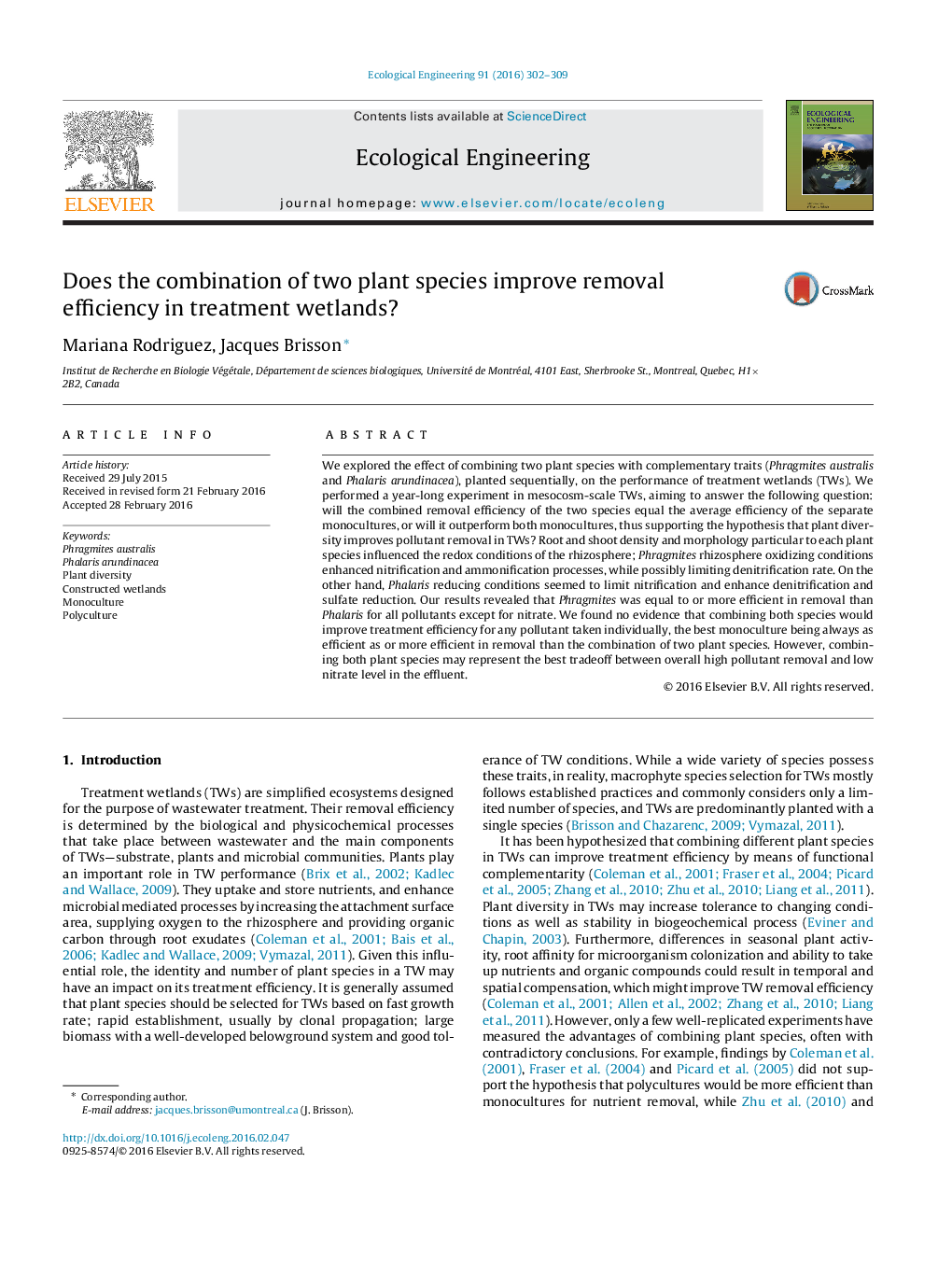| کد مقاله | کد نشریه | سال انتشار | مقاله انگلیسی | نسخه تمام متن |
|---|---|---|---|---|
| 6301330 | 1618008 | 2016 | 8 صفحه PDF | دانلود رایگان |
عنوان انگلیسی مقاله ISI
Does the combination of two plant species improve removal efficiency in treatment wetlands?
ترجمه فارسی عنوان
آیا ترکیبی از دو گونه گیاهی باعث بهبود راندمان حذف در تالاب های درمان می شود؟
دانلود مقاله + سفارش ترجمه
دانلود مقاله ISI انگلیسی
رایگان برای ایرانیان
کلمات کلیدی
موضوعات مرتبط
علوم زیستی و بیوفناوری
علوم کشاورزی و بیولوژیک
بوم شناسی، تکامل، رفتار و سامانه شناسی
چکیده انگلیسی
We explored the effect of combining two plant species with complementary traits (Phragmites australis and Phalaris arundinacea), planted sequentially, on the performance of treatment wetlands (TWs). We performed a year-long experiment in mesocosm-scale TWs, aiming to answer the following question: will the combined removal efficiency of the two species equal the average efficiency of the separate monocultures, or will it outperform both monocultures, thus supporting the hypothesis that plant diversity improves pollutant removal in TWs? Root and shoot density and morphology particular to each plant species influenced the redox conditions of the rhizosphere; Phragmites rhizosphere oxidizing conditions enhanced nitrification and ammonification processes, while possibly limiting denitrification rate. On the other hand, Phalaris reducing conditions seemed to limit nitrification and enhance denitrification and sulfate reduction. Our results revealed that Phragmites was equal to or more efficient in removal than Phalaris for all pollutants except for nitrate. We found no evidence that combining both species would improve treatment efficiency for any pollutant taken individually, the best monoculture being always as efficient as or more efficient in removal than the combination of two plant species. However, combining both plant species may represent the best tradeoff between overall high pollutant removal and low nitrate level in the effluent.
ناشر
Database: Elsevier - ScienceDirect (ساینس دایرکت)
Journal: Ecological Engineering - Volume 91, June 2016, Pages 302-309
Journal: Ecological Engineering - Volume 91, June 2016, Pages 302-309
نویسندگان
Mariana Rodriguez, Jacques Brisson,
